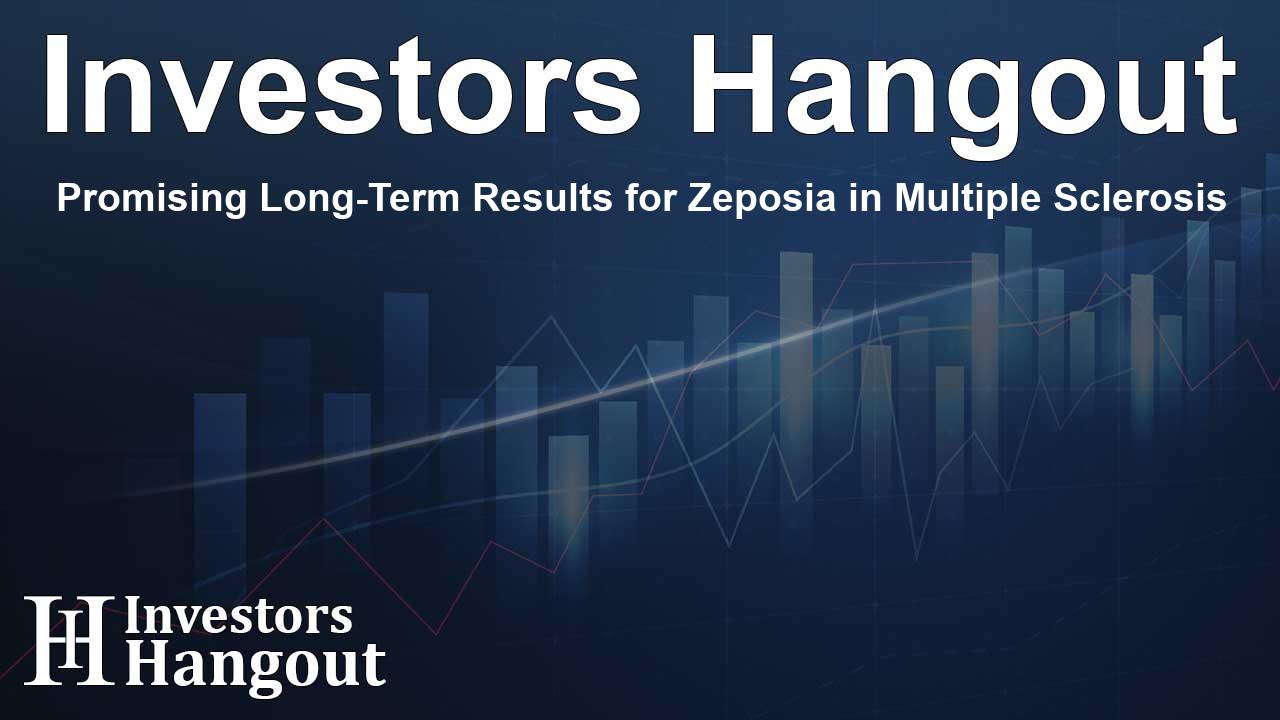Promising Long-Term Results for Zeposia in Multiple Sclerosis

Zeposia (ozanimod): A Milestone in Multiple Sclerosis Treatment
Bristol Myers Squibb recently unveiled compelling long-term data from the Phase 3 DAYBREAK trial regarding Zeposia (ozanimod). This investigational oral therapy has shown that's effective in managing relapsing forms of multiple sclerosis (MS). The results highlight the sustained efficacy and safety of Zeposia, an important consideration as patients navigate the complexities of MS treatment.
Long-Term Efficacy Demonstrated in Recent Study
At the core of the findings is the parameter of brain volume loss, a crucial factor in assessing the progression of multiple sclerosis. Throughout the open-label extension of the study, patients who maintained treatment with Zeposia for up to five years exhibited low and stable rates of whole-brain volume loss. Specifically, the trials RADIANCE and SUNBEAM yielded annualized least squares mean changes of ?0.27 and ?0.35, respectively, evidencing a noteworthy preservation of brain structure.
Understanding Brain Volume Loss
Brain volume loss in MS patients is particularly alarming, often leading to significant neurological deficits if left unmanaged. Jeffrey Cohen, MD, an expert at the Cleveland Clinic, emphasized the importance of early treatment. He noted that timely intervention with Zeposia can mitigate irreversible brain volume loss and cognitive decline, thus improving long-term patient outcomes.
Safety Profile Remains Consistent Over Time
In addition to its efficacy, Zeposia's safety profile has also come under scrutiny through the long-term analysis. The DAYBREAK study demonstrated a decline or stability in the rates of treatment-emergent adverse events (TEAEs) over more than eight years. Notably, rates of serious infections and opportunistic infections remained relatively low during the treatment period.
Importance of Continuous Monitoring
While Zeposia exhibits a favorable safety profile, continuous monitoring is essential. The final safety analysis involved 762 patients, revealing a decrease in adverse event rates over time. Such outcomes indicate that with proper oversight, Zeposia could become a cornerstone medication for patients combatting this chronic condition.
Highlighting the Recent Findings at ECTRIMS
The data—along with 12 other abstracts—will be shared at a significant upcoming event. The research will be presented at the 40th Congress of the European Committee for Treatment and Research in Multiple Sclerosis (ECTRIMS), which serves as a vital platform to disseminate innovations in MS care and treatment.
Community Impact and Patient Involvement
As Bristol Myers Squibb progresses, they express gratitude toward patients and investigators who have participated in these trials. The company's commitment to expanding their pipeline reflects a broader vision of advancing treatment methodologies and enhancing living conditions for those affected by neurological diseases.
About Zeposia: Mechanism and Applications
Zeposia is an oral sphingosine 1-phosphate (S1P) receptor modulator. It targets S1P receptors 1 and 5, which play a critical role in controlling lymphocyte egress from lymph nodes. This mechanism reduces lymphocyte migration to the central nervous system, potentially beneficial for MS patients. Besides MS, Zeposia is also indicated for other conditions, such as ulcerative colitis, further extending its clinical relevance.
Commitment to Research and Patient Care
Bristol Myers Squibb’s ongoing research emphasizes their dedication to overcoming the challenges posed by neurological conditions. Their robust pipeline focuses on developing therapies that aim not just to treat but to modify disease progression and improve overall quality of life for patients.
Frequently Asked Questions
What is Zeposia used for?
Zeposia is primarily used for treating relapsing forms of multiple sclerosis and moderately to severely active ulcerative colitis in adults.
How does Zeposia work?
Zeposia works by modulating sphingosine 1-phosphate receptors, which helps in reducing lymphocyte migration to the central nervous system, thereby decreasing inflammation.
What are the common side effects of Zeposia?
The most common side effects observed in patients included upper respiratory infections, liver enzyme elevations, and back pain.
Is long-term use of Zeposia safe?
Long-term studies indicate that Zeposia maintains a favorable safety profile, with low incidents of serious complications, especially under monitored conditions.
Can Zeposia be used in children?
Zeposia is currently approved for use in adults and should only be prescribed after a thorough evaluation of suitability for children by a healthcare professional.
About Investors Hangout
Investors Hangout is a leading online stock forum for financial discussion and learning, offering a wide range of free tools and resources. It draws in traders of all levels, who exchange market knowledge, investigate trading tactics, and keep an eye on industry developments in real time. Featuring financial articles, stock message boards, quotes, charts, company profiles, and live news updates. Through cooperative learning and a wealth of informational resources, it helps users from novices creating their first portfolios to experts honing their techniques. Join Investors Hangout today: https://investorshangout.com/
Disclaimer: The content of this article is solely for general informational purposes only; it does not represent legal, financial, or investment advice. Investors Hangout does not offer financial advice; the author is not a licensed financial advisor. Consult a qualified advisor before making any financial or investment decisions based on this article. The author's interpretation of publicly available data shapes the opinions presented here; as a result, they should not be taken as advice to purchase, sell, or hold any securities mentioned or any other investments. The author does not guarantee the accuracy, completeness, or timeliness of any material, providing it "as is." Information and market conditions may change; past performance is not indicative of future outcomes. If any of the material offered here is inaccurate, please contact us for corrections.